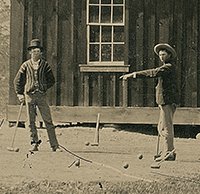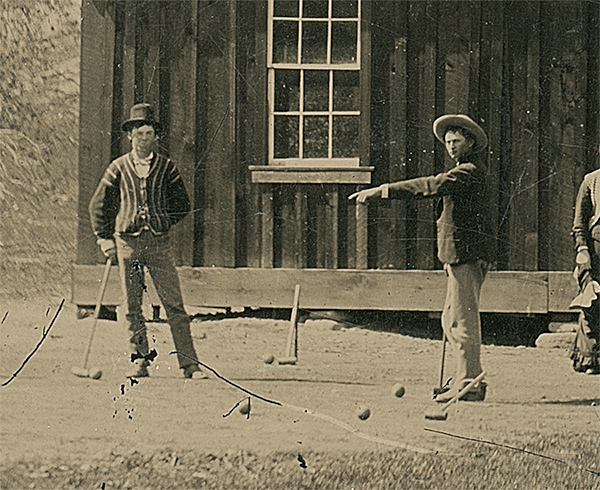Jackpot! $2 tintype of Billy the Kid worth $5,000,000 for Fresno collector
posted Thursday, October 29, 2015 at 3:59 PM EST

In Fresno, California in 2010, a collector named Randy Guijarro paid US$2 at a junk shop for a 4 x 5 tintype photograph of people playing croquet in 1878. The photograph has only recently been verified as an authentic piece of history by photography and facial recognition experts, and that authentication suggests that its new owner has made a very wise purchase indeed.
Mr. Guijarro told local NBC affiliate KSEE that he only purchased this photo because of a voice in his head. Mr. Guijarro's inner voice has a knack for making sound investments, it seems, because it turns out that the group of people photographed playing croquet was none other than Billy the Kid and his posse The Regulators along with various friends and family.

After a year of investigating the photo, Kagin's Inc. was able to authenticate it as being Billy the Kid and the Regulators in New Mexico. The US$2 photo purchased by Mr. Guijarro has since been appraised for US$5,000,000 by Kagin's and is only the second-ever confirmed photo of the notorious Billy the Kid. The only other photo of Billy the Kid is a 2 x 3 tintype that sold for $2.3 million in 2010. The authentication process of Mr. Guijarro's photo was extensive, involving determining the site where the photo was taken and investigating the site itself. Mr. Guijarro's journey to have his photo authenticated has been turned into a Kevin Costner-narrated documentary for National Geographic Channel, which originally aired on October 18th.

Mr. Guijarro found more than just $5 million when he purchased the photograph in 2010. He also found an incredible piece of American history and a look into the more docile side to the life of one of America's most infamous gunslingers. While the odds of finding a piece of American history like Mr. Guijarro has are incredibly slim, it just goes to show you that there can be much more to old photos than meets the eye.
For additional information on tintype photography, see this article from the National Media Museum.
(Seen via The Guardian)